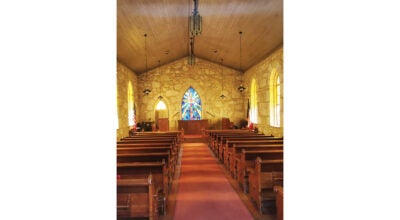Marking Mentor’s Legacy
Published 8:00 pm Thursday, September 27, 2012
Wesson can now call itself home to the latest stop on the Mississippi Blues Trail following Wednesday’s unveiling of a marker honoring Houston Stackhouse.
“When I had the opportunity to first hear the music of Mr. Stackhouse, I felt proud to be from Mississippi,” said Alex Thomas, who helps oversees the Blues Trail for the Mississippi Development Authority. “This is something positive for the county.”
To one pair in attendance, though, Stackhouse means more than local tourism or the state’s musical heritage. He means a link to family members passed on and a childhood still much alive in memory.
“We couldn’t miss this,” said Rosie Martin, of Crystal Springs, daughter of one-time Stackhouse playing partner Charlie Taylor. “He used to come by every day.”
Vera Johnson, niece of the influential Crystal Springs bluesman Tommy Johnson, carries a clear image of her uncle and Stackhouse: They’d sit on the front porch, drink Crystal Cola, eat head cheese and trade licks on the guitar.
Johnson retains vibrant impressions of Stackhouse as an open, inviting personality.
“He was a fun type person,” she said.
The marker notes Stackhouse never became a major blues figure, but played a key role as a mentor and sideman. He’s described as a constant presence in the Mississippi and Arkansas blues scene over several decades.
Stackhouse was born Houston Goff in Wesson in 1910, later moving to Crystal Springs. Partially inspired by Tommy Johnson, Stackhouse took up music and went on to play with many notable Copiah County bluesmen before moving to Helena, Ark. in the 1940s to join the more renowned blues artist Robert Nighthawk, a man Stackhouse had taught to play guitar. In Helena, he played on the famed “King Biscuit Time” radio program.
Stackhouse performed live at juke joints and festivals throughout his life, but only nine of the songs he recorded were released before his death in 1980. Full albums of his work have since appeared.
Stackhouse appeared in the first two Mississippi Delta Blues festivals and is buried at Crystal Springs.
Wednesday’s unveiling was timely, coming just days before Stackhouse’s birthday on Sept. 28.
The Wesson marker is the 162nd on the Blues Trail, and the 151st within the state, Thomas said.
Wesson’s marker joins others in the Southwest Mississippi region, including Blues Trail stops in Crystal Springs, Brookhaven, Monticello and McComb.
Thomas praised the efforts of Mayor Alton Shaw to bring the blues trail to Wesson. The marker is located at the Old Wesson Public School, which is in the final stages of a restoration project.
Surveying the new marker and the school’s restoration, Shaw feels good about what’s happening in Wesson.
“I like the positive direction,” he said.
For Johnson and Martin, the statewide Blues Trail is a fitting honor for the men they knew as friends and family.
“I think it’s a wonderful thing to give these blues artists their due,” Johnson said. “Who would have thought these men sitting on their porch playing their guitars would be this significant.”





